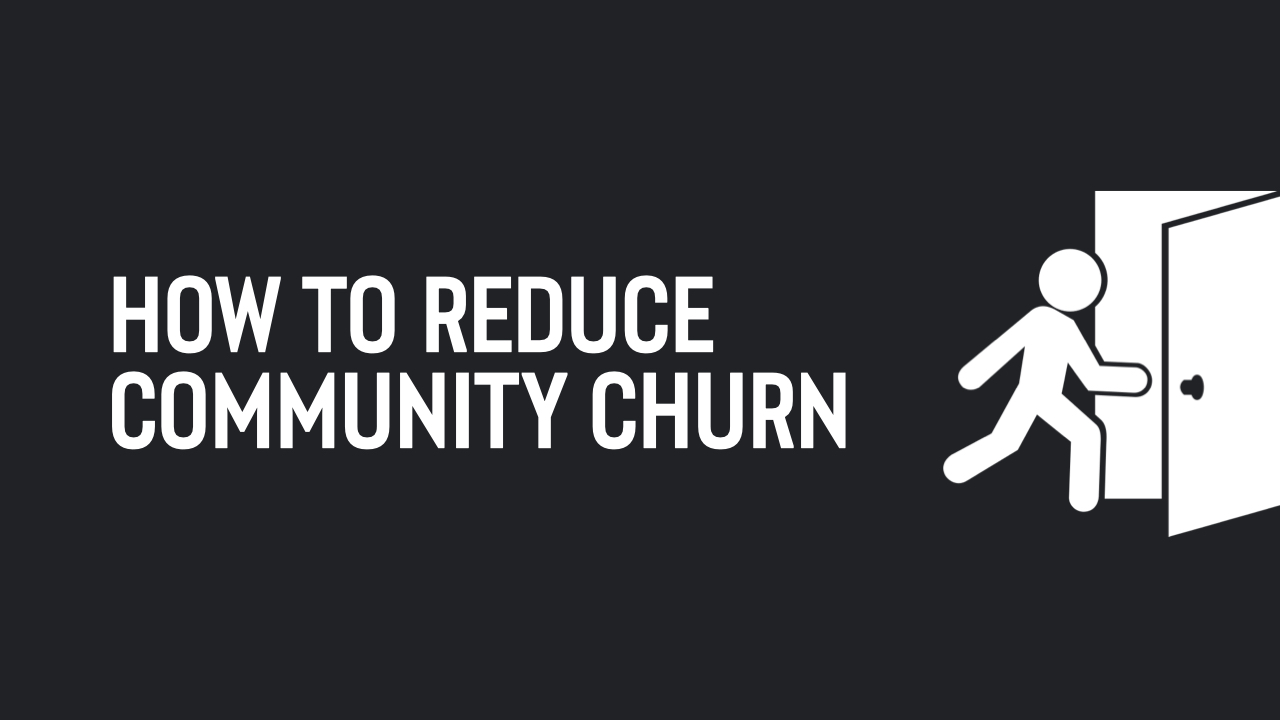
This is not your typical success story
We’ve all seen those stories of folk who ‘built a $100k business in 6 months’. They’re typically filled with useless vague tips like ‘bring value’ and ‘show up for your people’.
This is not one of those stories.
This is the detailed account of how I’ve built a $50k per year membership community business, as a side-hustle around a busy job, whilst becoming a dad for the first time.
And amazingly, I didn’t ‘hustle’ relentlessly. I didn’t burn out. In fact, this has been one of the most balanced, intentional ventures of my life.
The origin of my membership community Learn.Community
But Tom, you’re so busy! Why launch a side hustle?
As CEO and Co-Founder at Design Cuts, I have my hands plenty full. I’m working really hard (and focused) in my role there, and really enjoying the challenge.
5.5 months ago, we also had our baby daughter Stevie. She’s amazing and I’ve never known a love like this. But it’s definitely been a rollercoaster, and far from easy!
So why an earth did I decide to launch a paid membership community over a year ago?
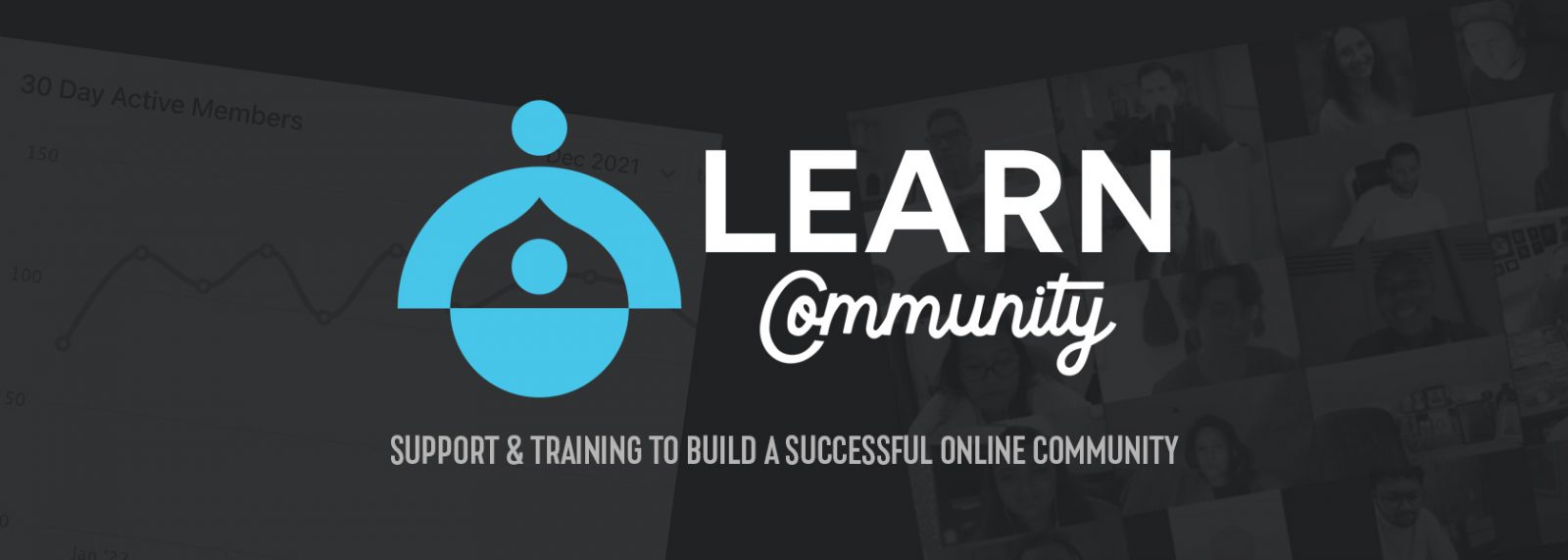
I’m fuelled by creation
The truth is, creating is like a compulsion for me. Whilst some people play video games in their downtime, I like to build things online.
Creating keeps me sharp. It lets me feel up to date with what’s happening in the online/marketing world.
At my company, I’m largely in strategy mode. Lots of meetings. Lots of planning. Reviewing financials and operations. Nurturing partnerships. Our team handle much of the day to day. I love my job as CEO, but I also love getting my hands dirty. Creating a piece of content. Visualising a new brand. Helping an individual that needs it. I really enjoy that stuff!
I’ve always had some level of side hustle / hobby. In the past few years I’ve built up my social profiles. I’ve had coaching groups, podcasts, you name it.
Many of these things have actually opened up some incredible doors for my company, as well as me personally.
Personal branding is a powerful thing.

My side hustle has been a costly hobby
The countless evening/weekend hours I’ve poured into learning my craft have been just that – a learning exercise. I’ve invested tens of thousands of dollars of personal money into scaling my content.
Until recently, I’d never really monetised any of this seriously.
Instead, I’d spend each evening responding to 100-200 DMs on social, for free. That’s how much I love helping others.
The time had come to monetise
However, there’s nothing like planning a family to help you recalibrate what’s important.
I knew that I wanted to keep helping people, but messaging strangers for hours each evening for the fun of it wasn’t going to cut it when I became a parent.
My wife Maxine was also having a hard time at her job. The stress that was causing didn’t seem to fit with the life we were building together.
So one day I proposed something to her:
Why don’t you quit your job and help me launch a membership community?
She was onboard, and so Learn.Community was born. I fronted the community management and marketing, Maxine helped with the admin and operations.
It all started with validation
Before ever building Learn.Community, I wanted to know if anyone would want it.
Back in May 2021, I pivoted my personal brand to become entirely focused on community. I released my free book the Community Manual, and grew my email list by a few thousand subs.
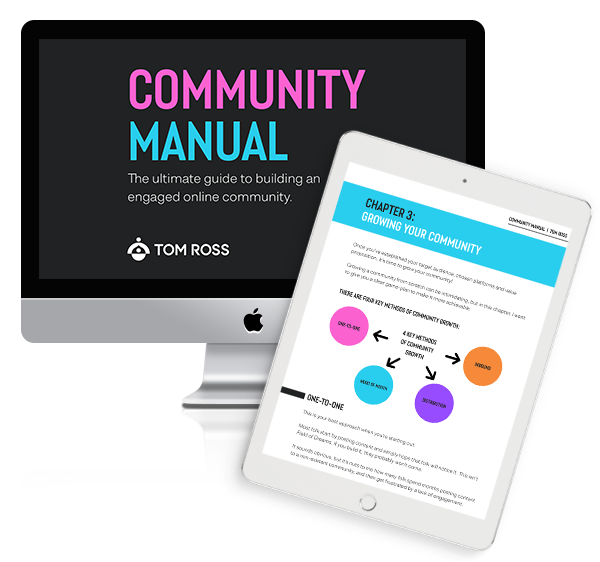
I now had a captive audience, who seemed to care about my new direction.
But would they be willing to invest into it?
Before ever building our community, I announced it as an idea. I shared this with my social audiences and newsletter. I instructed anyone who was interested in joining to go and fill out a Google form, to be considered as a founding member.
My goal was 100 founding members.
We got nearly 400 applications. Validation achieved!
Maxine handled most of the work of vetting potential members. We filtered applicants down to our successful 100 members, through a series of additional emails and steps designed to test their commitment.
Launching my membership community
I only built the community after it was validated
Once we were happy that we had 100 awesome people for launch, only then did I go build our community.
There’s nothing like having 100 people waiting on you to motivate you into taking action.
The community came together in days, not weeks
There was no time to be a perfectionist. I jumped into my new favourite community platform Circle, and started to build.
I figured out how to create community spaces. Designed header graphics. Wrote copy. Considered our onboarding process. It was a frantic weekend, but it came together!
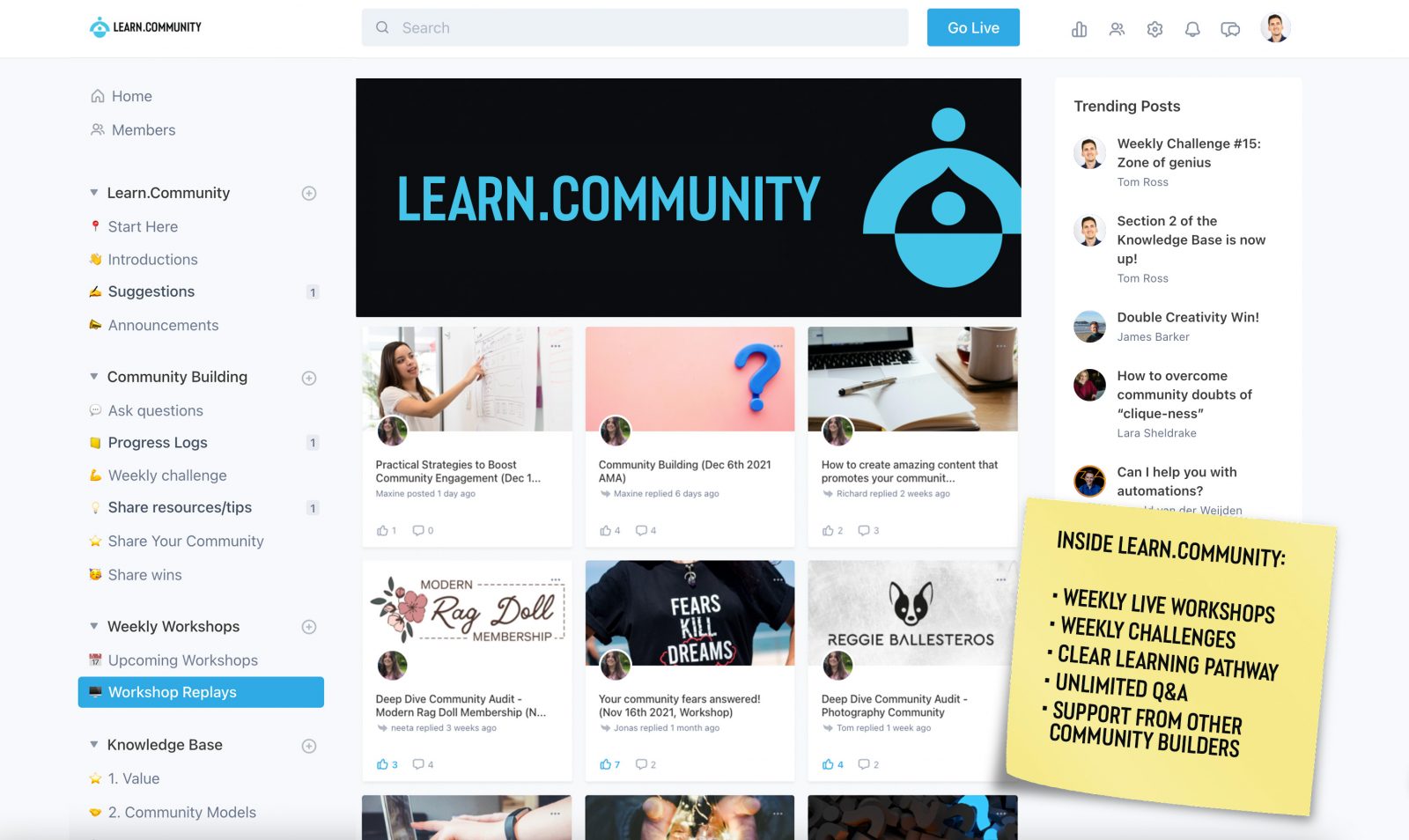
How we launched with a bang
Once the community was ready, we emailed the waitlist and organised a launch party Zoom call to welcome them inside.
This was a lot of fun, and a powerful way to launch.
The live call allowed me to get the group excited as we opened our doors. They could also start to connect with each other in a live setting before even joining the community.
I could address questions and objections live on the call, and after giving a brief demo of what was waiting for them inside the community, I asked everyone to go sign up.
A key tactic was asking everyone to stay on the call and comment ‘I’m in’ once they were inside.
This created a ton of social proof, as the comments started to blow up with ‘I’m in’ comments from all our new members.
I made tons of early mistakes
Those early months were filled with mistakes. Despite having been involved in community for years, this was my first paid membership community. I’d run hugely popular free communities, and Design Cuts is a community-first business. But this new venture was something different.
I tried to force engagement
I stupidly held engagement up as one of my biggest priorities with this new community.
I was watching our daily/weekly engagement metrics like a hawk.
I’d start silly, off-topic threads “hey, what’s everyone’s favourite hobby?” just to try and get a few extra comments that week.
This was all driven by my ego, rather than my desire to help people.
One time, I even called out members in an attempted tough love post. I was frustrated that every member wasn’t leaping at the chance to get the help available in the community, so questioned why they weren’t showing up more.
Unsurprisingly, there was push back from members, who felt guilted and shamed for not being more active. Some had even been inactive due to personal/medical reasons, and felt sad that I’d called them out.
The tough love post was from a place of truly wanting to over-serve each member, but honestly, it was also driven by insecurity and ego around wanting more engagement.
Stupid move.
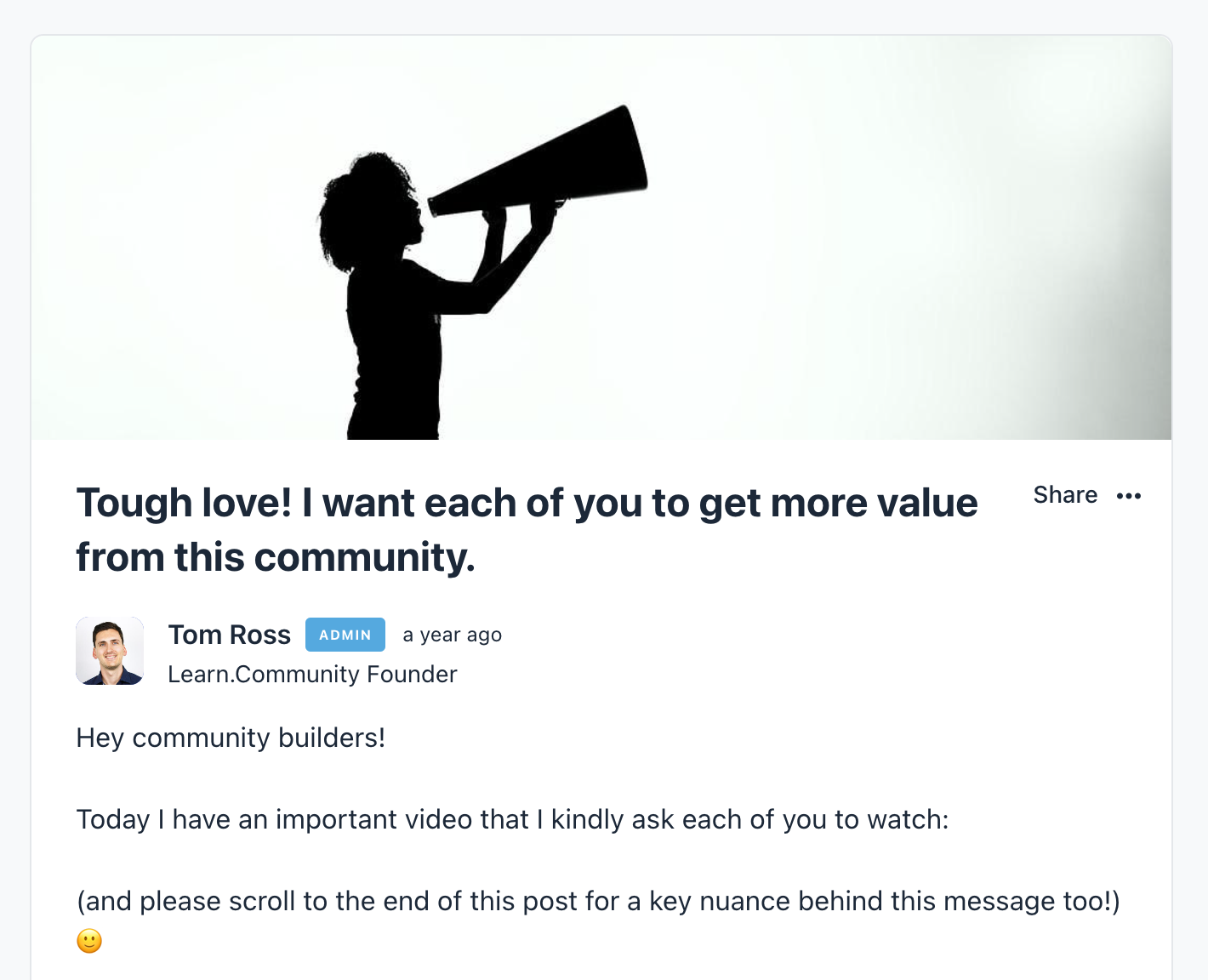
I owned the mistake, and it turned into a really constructive, open conversation with members. It was a huge learning lesson for me in terms of how to understand engagement. (Tip: Don’t force it!).
Operationally we were a mess
We were also an operational mess. It was possible as Maxine was working full-time, but much of her work was unnecessarily manual.
Each member application took serious time and several back-and-forth steps to execute.
I was also creating custom workshops for our weekly community event, which took a ton of my time at weekends to create.
I definitely underpriced at launch
I made the classic mistake that I advise others not to do. I underpriced at launch. Our founding rate was just $10 per month ($100 for the year), which is ridiculous cheap. Whilst the community was less developed then, it was still an unsuitable price point. I appreciate every founding member (and many are still with us), but it definitely made the community more unscalable. It would have been smarter to launch with 30 members paying $30 per month instead.
We started to scale
The community scaled nicely in the first year!
MRR was growing steadily
Each time we opened up a new cohort (every 2 months) we saw a healthy boost in members.
The below graph shows our first year’s MRR (monthly recurring revenue). (I’ll explain the flatline later in this article)

Also for the eagle-eyed amongst you, you’ll see that the ARR (annual recurring revenue) is slightly under $50k. That’s because the community also created some additional income via sponsorship/affiliates, that isn’t shown in this report.
Distribution was key to growth
Truthfully, whilst early growth was strong, it was clear that I quickly maxed out my audience. This is very common – people launch a community, and after initial early adopters, they aren’t experiencing sufficient audience growth to provide a constant funnel of new members.
In my case, due to such limited time for this venture, I basically stopped posting on social.
Due to my audience stagnating, I realised I had to lean into distribution. I had to figure out how to get in front of other people’s audiences.
I developed a closer relationship with Circle, my community platform of choice. After being helpful in their community, they quickly made me a Circle expert. To this day, I continue to give workshops for their members, write columns and appear in summits. As a result, Circle is one of the biggest drivers of new members for our community.
I also spoke about community in front of some large audiences, such as this talk I gave on The Futur with my friend Chris Do (which is about to hit 50k views and counting).
Some distribution efforts invariably fell flat, but I doubled down on the ones that were clearly working.
These efforts are high ROI on my time, so for a few well placed hours, I can ensure a steady stream of new members.
Our operations needed fixing
A few months after launching Learn.Community, Maxine fell pregnant. It was such an exciting time, but in the midst of some pretty awful morning sickness, it was clear that the relentless manual work inside the community wasn’t going to be viable once she gave birth.
I love many aspects of community, but as a bit of a techphobe, I suck with automation. Realising I needed help, I joined Jay Clouse’s paid community, The Lab. It was a sizeable financial investment, but within a few weeks, I’d been given all the details I needed to automate 95% of Maxine’s role.
It took a few gruelling weekends of playing in Zapier, but I managed to get all our key automations in place before baby Stevie was born. It was a game-changer! Maxine’s workload reduced overnight, and she could focus on being the great mum she is!
One of the biggest changes we made was switching from a laborious application/vetting process, to an automated open process, where members could join anytime, and then be smoothly onboarded. I documented this new approach here.
Whilst this initially slowed our MRR growth versus our previous exciting cohort launches, the MRR is starting to pick back up nicely – plus the bi-monthly launches were taking a lot of effort/focus, so didn’t feel sustainable!
Tons of stuff didn’t work
It’s important to note that lots of things didn’t work out inside the community.
In the past, this may have frustrated me, but as a founder with a little more experience now, I know this is totally normal.
It’s the same way I encourage our team to run my main business. If something works, keep/improve it. If it doesn’t, then drop it and try something else.

Through dropping features like weekly challenges, progress logs, deep dives and weekly workshops, we’ve discovered more popular, valuable and sustainable features like member led workshops, monthly goal setting and community spotlights (where members share one thing they’re doing really well in their community, to inspire others).
I’m pretty unemotional about dropping features. If they don’t work, I try something else and move on.
My mindset has shifted so much
Member success comes first
One of the biggest lessons from this first year was:
Focus on member success and connection over engagement
If I work to help members reach their goals, and help facilitate connections between members, it’s infinitely more valuable than me trying to prop up an analytics dashboard with ego-driven engagement stats.
Member led is the way
For ages I was trying to generate all of the value myself. However, time and time again, when I shifted the focus to giving our members a voice, I was amazed by the depth and wisdom of their insights.
I opened up member led workshops as our members have such great ideas to share.
On our Office Hours calls, whilst I answer each question, I open questions up to the group – and often the answers are things I wouldn’t have thought of.
I regularly tag members in posts, who I think will be well equipped to help.
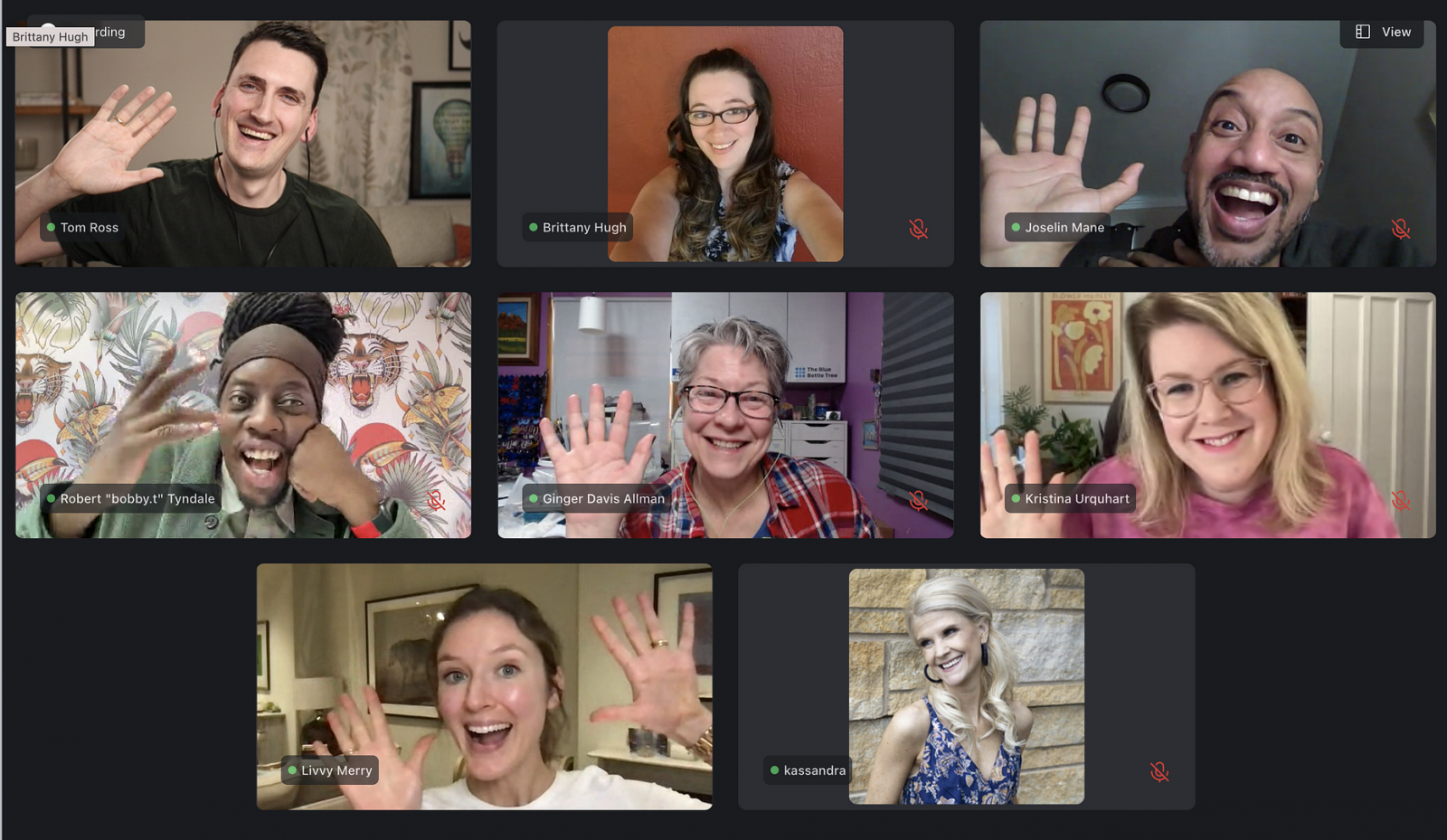
How I manage my time
You may be wondering how I manage my time handling all this.
Well asides from Maxine’s wonderful help, I’ve been trying to make this community as sustainable and enjoyable for me as possible.
Focus on permanent time-savers, not ongoing tasks
One huge thing has been that I’ve worked in sprints (mainly on weekends) to build content and processes that will save me time in the long-run.
A few examples include:
- Setting up automations to help onboard our members
- Writing the Community Manual to help attract subscribers for years to come
- Building a Knowledge Base inside the community, to ensure more members can access the info they need quickly
These things take upfront work, but then continue to save me time in the future.

Hard stops with my time
Due to my other commitments, I also set a rule that I wouldn’t exceed 1 hour per day working on Learn.Community.
This looks something like this:
Monday: Community responses
Tuesday: Office Hours live call
Wednesday: Community responses
Thursday: Member-led live event
Friday: Community responses
Weekend: Working ‘on the community, rather than ‘in’ it (i.e.: creating new content, automations and features)
This hard stop at the hour ensures that whatever is left over, I leave for the next day.
You could work endlessly inside your community, but you have to draw limits for your own balance and sanity.
Community can be scalable
Another revelation is that due to the typical engagement behaviours in a community, it’s remarkably scalable.
We’re considered an active community – much more so than most I see. However, we probably average 1-2 new posts per day.
Some days we get 4-5. Other times we may go 3 days without a new post.
Invariably members won’t be demanding help on a daily basis. Community doesn’t work like that.
Most members will be passively consuming content, recordings and watching conversations. Those that need help will drop in and out as they need it.
For me – Loom has been a great tool for leaving in depth, super helpful responses to questions in our forum. I can provide a TON of value in a 2-5 min personalised video answer for members. So at 1-2 posts daily, that takes me all of 5-10 minutes. Throw in a handful of comment responses, some DMs, and welcoming new members, and often I won’t need the full hour – I may be done in 15-30 minutes.
This may not be possible if we had 5000 members. But at less than 200, it’s plenty doable.
My audience has suffered
Invariably, when I launched this community, and had a child, something had to give.
No more evenings scrolling social and replying to 100+ DMs.
Sadly, my content output has been pretty much 0.

I have to prioritise showing up and supporting our paying members.
Whilst I believe in the power of audience building and content marketing, I’ve also been very mindful to adjust to life as a dad, find my rhythm running a paid community, and take things one step at a time.
I’m also lucky that we’re still growing, so I can afford to not go hard on content right now.
In many ways, I’m spending less time on my side hustle than before, but working smarter.
I’ve gone from negative $10-20k per year, to $50k revenue.
I’ve gone from countless hours in the social media rabbit-hole, to building a real asset, serving a fantastic group of people and feeling fulfilled doing so.
It’s been a blast, and we’re only just getting started.
This is not my main focus, so I’m enjoying the lack of pressure to grow it quickly. It’s a marathon, not a sprint, as they say, and I’m just having fun showing up each week and helping our members.
If you’re considering launching a membership community, I can highly recommend it! And if you need some help navigating the process, Learn.Community can give you the support you need.



